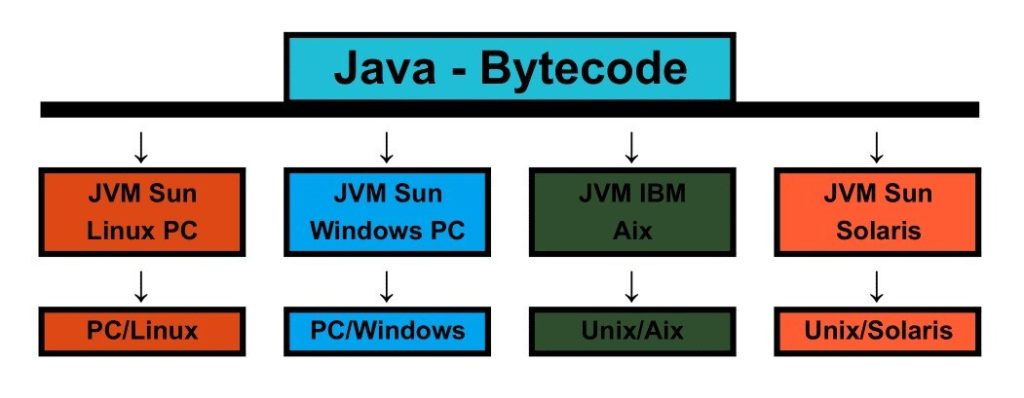Table Of Content
Java is one of the oldest programming languages still being used today, and has managed to retain its popularity among developers. In its decades of use, Java has been used for a lot of different applications, from desktop apps to web-based apps and backend functionality.
Remember the good old days when we would play SimCity and Worms: A Space Oddity? How about Minecraft? If yes, I am sure you don’t need an introduction to Java, nevertheless, we shall begin with the basics, and discover what can you do with Java today.

What is Java?
Java is a high-level popular development platform and object-oriented programming language based on the rules and syntax of C and C++ languages, which is used for its broad applications. It’s a language that’s used for software development on various devices, ranging from computers and gaming consoles to mobile devices and medical devices. Even today, Java is one of the most popular programming languages used by many a custom software development company.
The most significant advantage of Java is that software written in it are portable and easily transferable to other compatible devices without having to make major changes to the code. The very reason for designing the language was to enable the easy transferability of the code. It was first released in 1995, by James Gosling of Sun Microsystems who aimed to build it with a philosophy of “write once, run anywhere.”
As aforementioned, with each passing year, an improved or an entirely new software development tool comes to the market, and beats other products making them obsolete. Yet, the fact that Java has still managed to remain quite popular, shows that it has been immensely competitive and cutting-edge in terms of functionality requirements of today’s developers.
How Does Java Work?

Most programming languages compile a program into a machine language program, before allowing it to be executed.
Java also works in a similar manner, where a source code is compiled into a bytecode before the Java Virtual Machine compiles that bytecode into a machine code. In turn, the Java Virtual Machine allows the Java bytecode to run on any device. That is how it functions as a “write once, run anywhere” language.
This entire process involves three steps for writing and executing a java program:
- Firstly, the developers need to have a Java source code which has to be saved with the program.java extension.
- In the second step, we need to use a Java compiler for testing the code against possible errors, once the compiler ensures that everything is correct, it allows for the source code to be compiled in order for us to get the Java Bytecode with a program. Class extension. This Java bytecode simply works as a modified version of the Java source code for enabling its use on devices that support a Java Virtual Machine.
- Java is a programming language that has platform specific JVM interpreters which work to interpret the java bytecode. The bytecode is platform independent, which allows the JVM to read the entire code line by line and translates it to a machine level code which then becomes executable.
What Can You Do With Java?

For those who wonder what can you do with Java today, let’s look at the example of Java applications in the real-world. The vast range of its real-world applications make it one of the most popular options for software outsourcing projects.
Web Development
Java has several features for web development, such as Servlets, Struts, Spring, hibernate, JSPs, and so on that allow us to create highly secure software that is simple to program.
Websites using Java: LinkedIn, Twitter, and Amazon.
Desktop GUI Applications
Java enables us to develop a variety of graphical user interfaces (GUIs). AWT, Swing API, or Java Foundation Classes are examples of Java’s APIs/functions that aid in the development of sophisticated GUIs. Advanced tree-based and even 3D graphical applications may be created using these tools.
Examples of Desktop GUI Applications written in Java: Adobe reader, Eclipse, and uTorrent.
Enterprise App Development
Java is the most popular programming language for developing commercial applications since it offers a number of powerful features that help them achieve high performance. Java not only improves the performance of apps, but also makes them more powerful, secure, and flexible.
Java has a Java Enterprise Edition (Java EE) platform that includes API and runtime environment capabilities for scripting and running business applications, network utilities, and web services.
According to Oracle, Java is currently running on almost 97% of corporate computers. The increased performance and faster computing provided by Java have encouraged most business applications to be created in Java.
Enterprise Applications using Java: Banks like Barclays and Goldman Sachs, e-commerce giants like Amazon and eBay, insurance companies like MetLife, and many more.
Mobile App Development
J2EE, which is the Java version of the ECMAScript standard, has a feature named J2ME that allows you to build mobile apps for phones that run on Java-compatible devices.
Java is the programming language of choice for Android’s SDK, which is why it’s also known as Java-based Android SDK.
Popular Java-based mobile apps: Twitter, Spotify, Netflix.
Web Servers & Applications Servers
There are numerous Java-based applications and web servers available today. We have Apache Tomcat, Project Jigsaw, Rimfaxe Web Server (RWS), and Jo! Among web servers, Jo! etc. currently dominates the market.
The web application development market is dominated by Oracle’s WebLogic server and its competitors, including IBM J2EE Enterprise Application Server. The industry is also being propelled by commercial applications servers like WebSphere, JBoss, and WebLogic, among other things.
Examples of Web Servers & Applications Servers Using Java: Jetty, Tomcat, GlassFish, and Payara Micro.
Scientific App Development
Java’s popularity as a programming language is due to its excellent security and robustness features, which appeal to scientists. Java also performs complex mathematical computations that are identical across platforms.
Now, people question what can you do with Java that other, more modern programming languages aren’t able to? The fact is that due to the popularity and years of Java usage, developers are able to find solutions more quickly and easily compared to the newer technologies.
Most popular Java-based scientific tool: MATLAB, which is used by scientists and engineers to solve complex mathematical problems. Other popular Java-based scientific tools include Maple, GIS software, and image processing software.
Embedded Systems
Embedded systems are low-level systems that exist within higher electromechanical systems. These are tiny chips, processors, and so on that are referred to as integrated systems.
Java’s versatility allows it to deliver strong tools that can handle runtime errors effectively and swiftly, making it ideal for developing low-level programs.
Embedded systems applications using Java: Smart cars, smart homes, industrial automation systems, and many more.
Software Tools
Java is widely used in software development. IDEs like Eclipse, IntelliJ Idea, and Net beans are all developed in Java. That means that the answer to the question “What can you do with Java?” is simply, write more Java.
The most recent and the most popular desktop GUIs for developing software are Swing, AWT, Applet, JavaFX and more. Swing, AWT, Applet, Java FX, and other features have been used to create Software in the past.
Server Apps in Financial Industry
Banks, investors, and other financial institutions require a variety of software applications to operate their day-to-day operations, including front and backend office electronic trading systems, settlement and confirmation algorithms, data processing, among other things.
The majority of these tools are utilized to create server-side applications that receive data from one machine for processing it, before sending the processed data to another.
For their business, the majority of the major financial institutions such as Barclays, Citigroup, Goldman Sach, and others utilize Java-based software solutions.
J2ME Apps
Handsets that run J2ME exist for other manufacturers, such as Nokia and Samsung. J2ME is also popular with items like Blu-ray discs, cards, and set-top boxes. WhatsApp, which is available on Nokia phones, is a J2ME application.
Trading Applications
Java is a popular programming language for front-to-back connections between banks. Murex, which is used in many banks for front-to-back connectivity, is written in Java.
Gaming Applications:
Java has long been used for development of 2-dimensional games. From browser based gaming to android game development, Java is popular for both devices. Which is why today it’s essential for android gaming and cannot be opted out of building apps on it.
Java is compatible with jMonkeyEngine, a powerful open-source 3d-Engine with the capacity to design 3-Dimensional games. It’s also the primary language used in Android games as it supports the Dalvik Virtual Machine. And because DVM is specially designed to run on android platform.
Moreover, Java is also the programming language used to develop popular AAA titles such as Saint’s Row and Minecraft. This shows that the language has a sentimental connection to the gaming community at large.
Examples of Gaming Applications Created with Java: Mission Impossible III, Asphalt 6, Minecraft
Big Data Technologies
The term “big data” is one of the most frequently used and current terms in the software sector. Big data refers to the study and extraction of information from huge amounts of data.
Hadoop is an open platform that runs on Java and is associated with Big data. Because of Java’s advantages over other technologies, such as automatic garbage collection, memory allocation, and stack allocation mechanism, the language gets a leg up. We may confidently predict that Java will be the future of Big data.
Real-time Java-based Big data Technologies: Hadoop, Spark, Storm, Kafka, Flink, ElasticSearch, etc.
The Benefits and Drawbacks of Using Java:
Each and every programming language has its own strengths and weaknesses, and that is the reason why it’s important to choose the most suitable programming language depending on the project we’re working on.
Advantages of Java Development:
Over time, Oracle has developed Java while also updating it on a regular basis. The presence of a large developer community is a benefit for anyone learning Java. Because Java has been operational for more than two decades, it offers a huge number of open-source libraries and functions. For those who have wondered, “What Can You Do With Java?” Here’s a rundown for you, of some of the major advantages of the Java programming language.
- Simple and straightforward to pick up. The syntax of Java is comparable to C and C++. In Java, explicit pointers, operator overloading, storage classes, and other elements present in C++ are not available. As a result, it’s a less complicated language for writing code.
- Java is a class-based object-oriented language with features such as classes, encapsulation, abstraction, inheritance, and polymorphism. Everything in Java is regarded as an object and comes with associated attributes such as class, encapsulation, abstraction, inheritance, and polymorphism.
- JAVA supports multithreading. Java enables the conversion of complex programs into many threads and their simultaneous execution. This lowers program execution time as well as hardware and software requirements.
- Java programs may run on any platform, as they are written in this object-based, imperative or functional programming style. Because Java executes within a virtual machine sandbox, the platform and computer architecture of the target system need not be considered while developing Java applications. Project administration becomes simple since different platforms can execute the same code without requiring recompilation for each device.
- It’s a secure platform. Java programs run within its runtime environments. It also offers a classloader to load classes into the runtime environment, providing a buffer and being inherently safe. However, because most of the web now runs on JavaScript, Java browser plugins are extremely vulnerable and should be disabled whenever possible.
Disadvantages of Java Development:
Java has several benefits, but it is not without drawbacks or room for improvement. Some of the disadvantages include:
- Applications should be run on JRE, as they are platform agnostic. The Java sandbox protects applications from Platforms other than Java, however it also restricts them to work solely on top of JRE, which consumes more memory. Applications must operate on top of a Java virtual machine, resulting in higher memory usage.
- Java UI components are not as attractive. There are several Java UI framework choices, but they aren’t sophisticated enough to handle complicated UI elements that can be easily produced using JavaScript programming languages.
- Java does not have a backup facility, and works only on storage.
- Garbage collectors in Java are automatic. This may appear to be a benefit, but it provides no way for programmers to control garbage collection. This is a major drawback and causes issues when complex functionalities are added to Java.
Next Articles in Line:
To Sum It Up:
We’ll conclude this article by saying that Java is still a relevant and useful tool for development, despite some of its drawbacks. If you’re looking to get started in development, learning Java is a great place to start. Whether you’re looking to build desktop applications or web-based ones, Java is a powerful tool that can help you achieve your goals. With the right tools and resources, you’ll soon be on your way to mastering Java development.
Java is an incredibly versatile programming language with a wide range of applications. Whether you’re looking to build mobile apps, web-based programs, or desktop applications, or are simply searching for what can you with Java, this is the right place for you. In this article, we’ve provided an overview of Java development, and checked out how Java is still relevant in today’s development world.
FAQs:
| Is Java hard to learn? No, compared to most of the other programming languages, Java is much easier to learn if you make the effort of learning the language with consistency. This is why Java is considered a very beginner friendly language, and answers the question of what can you do with Java today. |
| Can I learn Java in 3 months? Of course, you can definitely learn Java in 3 months. However, you will most likely be able to only acquire a working knowledge of Java in that period. To become a proper Java programmer, it can take you between two to three years. |
| What is Java used for? Java is a versatile language, meaning the question “What can you do with Java”, is quite long. Java can be used to develop a multitude of applications for a wide range of platforms. From Desktops, mobile and tablet devices, to blu-ray players, television, etc., all these make use of Java-based applications. |
| What is the difference between Java and JavaScript? The main difference in Java and JavaScript is that Java is a programming language, whereas JavaScript is a scripting language. Also, the former is used mainly for backend development, whereas the latter is oriented more towards front-end development. |
| Can I learn JavaScript without Java? The name of JavaScript and Java may give the impression that they are related, however, both the languages are used for very different purposes. So, you can learn either of these languages without the need to learn the other. |
Empower your digital initiatives with BariTechSol, a premier custom software development company. Our skilled team tailors cutting-edge solutions to your unique needs. Elevate your tech experience and stay ahead in the digital realm. Partner with BaritechSol and code the success of your next big idea.


